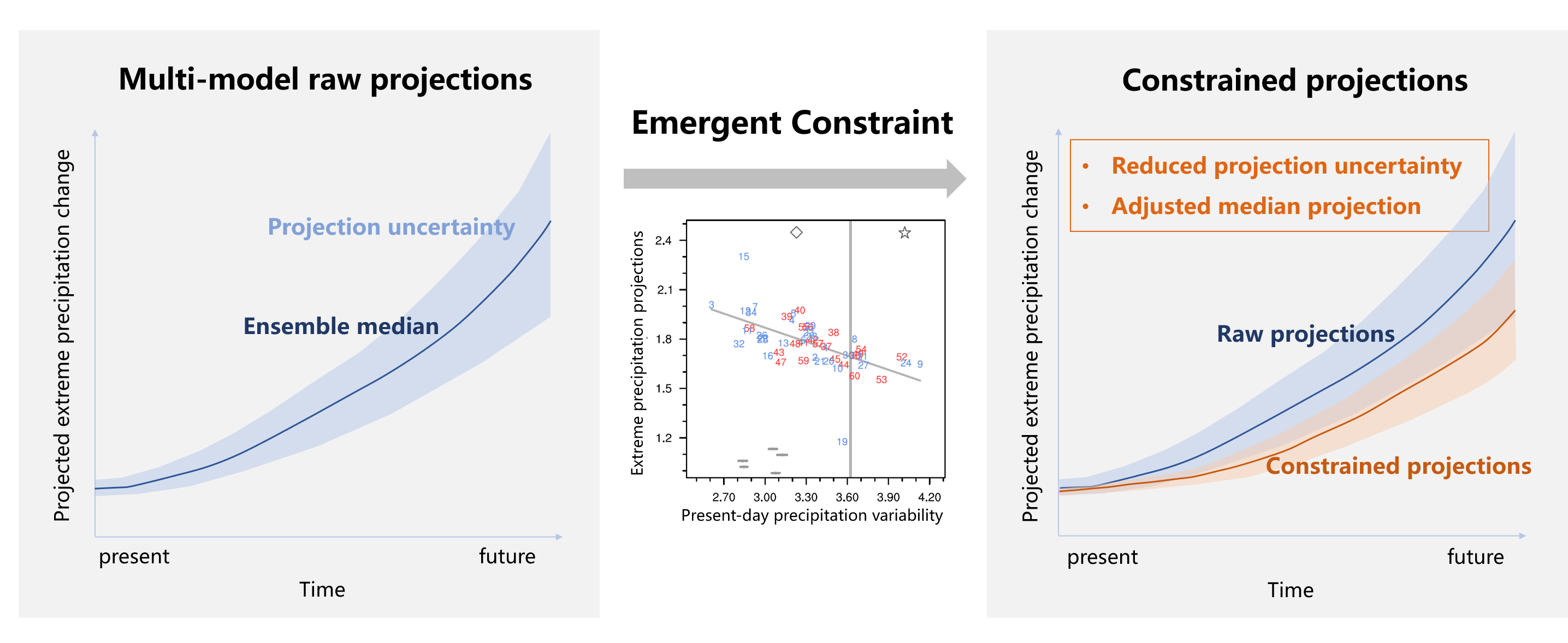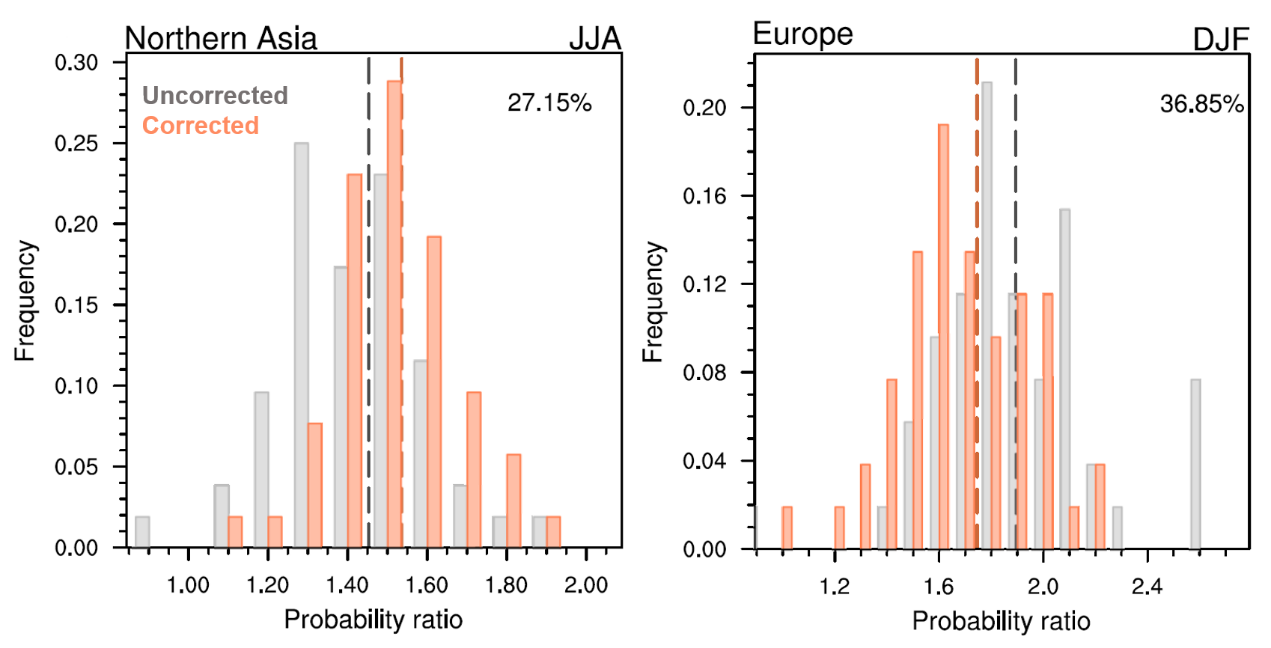Making extreme precipitation projections more reliable using observational constraint
Published in Earth & Environment
The world continues to be surprised by record-shattering precipitation extremes, including the Europe and China floods of 2021 and the more recent Pakistan flood of 2022, that have caused havoc on the society and economy. How much worse will it be in the future as global warming intensifies? Countries need reliable climate projections to prepare themselves for adaptation activities. However, current state-of-the-art climate models, despite all agreeing on a future intensification, still show large uncertainties in the magnitude of changes in extreme precipitation – the so-called “projection uncertainty”. This poses a grand challenge for climate action and adaptation planning.
To tackle this issue, two major challenges remain to be solved, including identifying the sources of projection uncertainty, and finding effective methods to constrain such uncertainty.
In this study, we aimed to identify the sources of multi-model projection uncertainty of extreme precipitation, and based on which, to narrow such projection uncertainty using an emergent constraint (Figure 1).

Figure 1: An illustration showing the process and effect of emergent constraint (Image by Wenxia Zhang, IAP/CAS).
Using multi-model ensemble simulations from the Coupled Model Intercomparison Project Phases 5 and 6 (CMIP5/6), we found that the disagreement between extreme precipitation projections from different models is significantly related to the models’ representations of present-day precipitation variability (i.e., the range that precipitation events vary with time). An emergent relationship can thus be established – specifically, climate models that simulate weaker present-day precipitation variability tend to project larger increases in extreme precipitation occurrences under a given global warming increment (Figure 2). This emergent relationship holds significantly in many regions around the world but is particularly robust in the mid-to-high latitudes.

Figure 2: The emergent relationship over typical regions (left: Northern Asia in June-to-August; right: Europe in December-to-February). Scatterplots of the present-day precipitation variability and the probability ratio of extreme precipitation changes under a 3°C global warming increment in the joint ensemble of CMIP5 and CMIP6 (Coupled Model Intercomparison Project Phases 5 and 6; blue and red dots, respectively). (Adapted from Zhang et al. 2022)
We justified this emergent relationship statistically and theoretically using idealized distributions for precipitation (based on gamma distributions). This statistical argument not only provides insights into understanding the projection uncertainty, but also enhances the credibility of the constraint.
Using this emergent constraint, combined with observed present-day precipitation variability, we can provide an effective way of constraining extreme precipitation projections.
This observational constraint not only reduces the projection uncertainty by 20-40% regionally, but also corrects the best estimate of future changes (Figure 3). For example, the constraint suggests that future increases in extreme precipitation may be greater than previously projected in Northern Asia, but may be less than previously projected in Europe.

Extremes, by definition, are low-likelihood high-impact events that can exert adverse impacts on society. How to best utilize currently available climate model projections to assess future risks of climate extremes and to aid “safe landing” is a grand challenge to both the science community and policy makers. Given the urgent need for actionable climate science following the COP26, any reduction in uncertainties of future climate projections, climate extremes in particular, will undoubtedly bring valuable encouragement to international climate actions and economic planning.
Previous investigations have developed methods to constrain projections in the context of global or tropical average extreme precipitation. However, climate adaptation activities need reliable regional information of projection. An important merit of this emergent constraint is that it holds at regional scales, and thus can be applied to different regions to make regional extreme precipitation projections more reliable. This is expected to provide actionable climate science to greatly benefit regional adaptation planning, ranging from agriculture planning and food security to flood-control systems and public safety, among many other sectors.
Follow the Topic
-
Nature Communications

An open access, multidisciplinary journal dedicated to publishing high-quality research in all areas of the biological, health, physical, chemical and Earth sciences.
Related Collections
With Collections, you can get published faster and increase your visibility.
Women's Health
Publishing Model: Hybrid
Deadline: Ongoing
Advances in neurodegenerative diseases
Publishing Model: Hybrid
Deadline: Dec 24, 2025





Please sign in or register for FREE
If you are a registered user on Research Communities by Springer Nature, please sign in